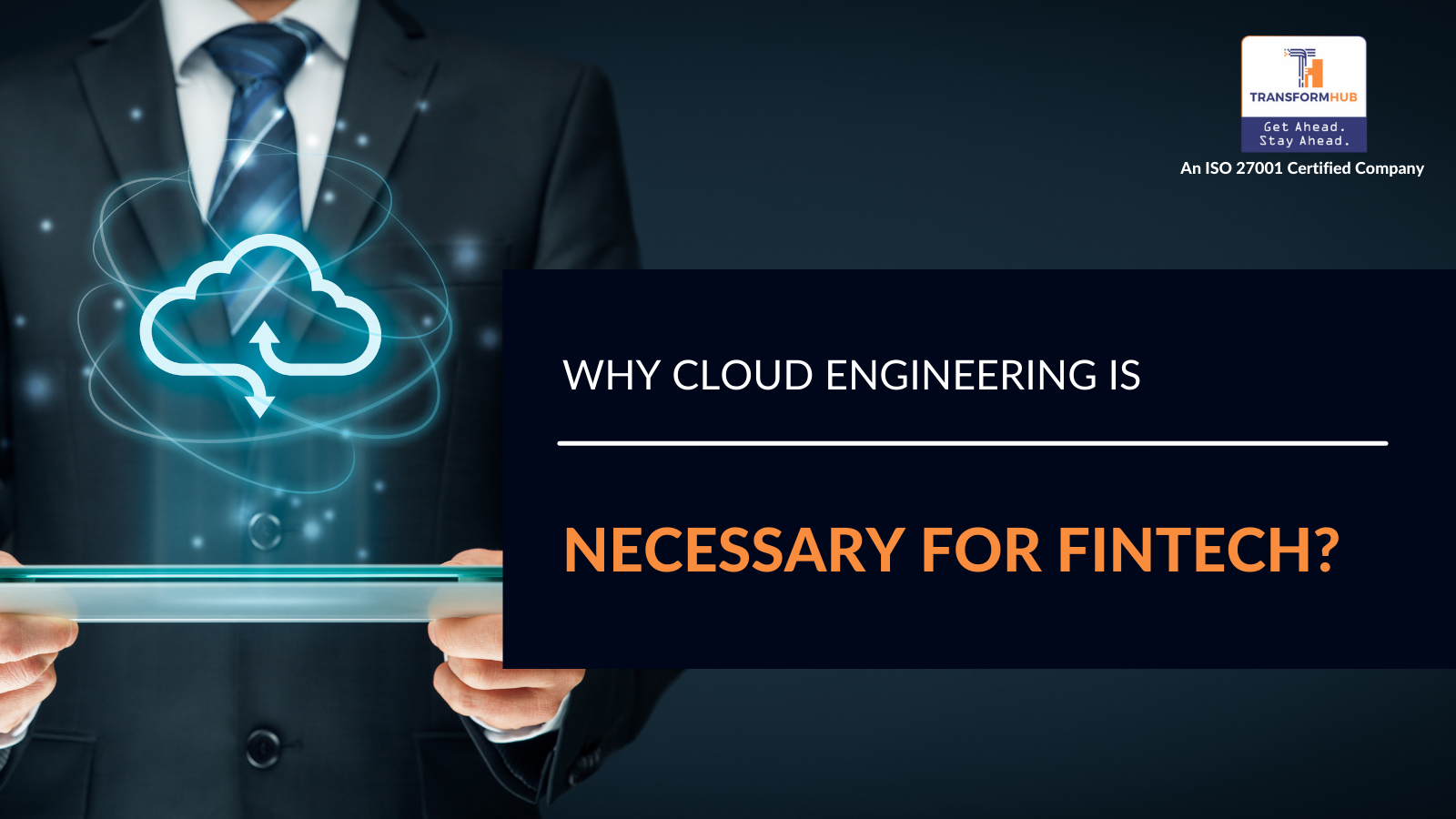How FinTech drives Innovation and Transformation in Financial Services
The financial services industry is in a continuous state of rapid evolution as new regulations and competitors continue to challenge profits and operations.
The need for greater efficiencies and business value has led to FinTech disruption.
The rise and influence of FinTechs have changed the tide for the banking and financial world.
Those who have embraced modern technologies have demonstrated their ability to mature quickly keeping pace with changing times and business intricacies.
While it comes as no surprise to see FinTech or financial technology driving the financial services sector to great heights, it has become a must-have as eCommerce has become rampant and customer experience is now everything.
Besides, innovation and the direct-to-consumer trend necessitate greater security to empower customers with smarter finance industry solutions to help them manage their money.
According to Statista, 66.7% of bank executives believe FinTech will impact wallets and mobile payments globally while 38% of U.S. personal loans are being granted by FinTechs.
China leads the way in FinTech adoption with 91% of small and medium enterprises in the country using at least one FinTech service.
Emerging technologies and modern FinTech solutions are here to stay.
When leveraged effectively, they ensure greater convenience and a better experience.
Rather than fearing disruption, it's time to look for a competent digital transformation company that can help leverage the power of FinTech in suitable ways.
The cornerstone of financial innovation
The financial industries have witnessed significant changes and shifts and have realized financial innovation is the only way to survive them.
Luckily, innovations can be developed jointly through strategic alliances and partnerships with digital transformation companies and the best banking solution providers to ensure agile adoption.
As aptly stated in the book Innovation in financial services: A dual ambiguity (Mention and Torkkeli, 2012), financial innovation embraces “changes in the offerings of banks, insurance companies, investment funds, and other financial service firms, as well as modifications to internal structures and processes, managerial practices, new ways of interacting with customers and distribution channels”.
FinTech enables these changes in offerings by encouraging new ways of working and facilitating better communication and engagement with customers.
While it is an umbrella term commonly used for innovative technology-enabled financial services, it is not just for startups and creates new business models, products, and processes even for traditional businesses to help them stay relevant and competitive.
With FinTech, you can make payments digitally, plan investments with Robo-advisory services, and even create a personalized budget using mobile apps.
Hot trends that go beyond digital payments
While all of us are now empowered to pay for products and services by simply tapping a 'buy now' button on eCommerce apps, digital payments have set the tone for more interesting trends that are powering the long-term growth trajectory of FinTech.
These include:
1. Buy Now Pay Later (BNPL) services
A new spin on the old concept of paying in installments, BNPL services give customers greater freedom to pay over a period of time in installments according to their financial situation.
These services are a boon for those with low or nonexistent credit, and fees are charged only if they are late on their payment plan.
The BNPL model is clearly working as is evident from PayPal's volumes that soared nearly 400% on a Y/Y basis during Black Friday.
Confirms PayPal CEO Dan Schulman told CNBC's Jim Cramer.
"We did some 750,000 transactions alone in one day on Black Friday."
2. Mobile-first and mobile-only banks
Cloud technology has made it easy for banks to manage simple processes such as onboarding new clients and opening accounts.
While ensuring regulatory compliance, it allows banks to curtail large upfront investments in IT services and transition to convenient, cost-effective, subscription-based software-as-a-service (SaaS) models.
Windowless banking is now acceptable, and transactions are becoming increasingly digital. Challenger banks are rising in popularity which is evident from the fact that Europe has 74 challenger banks as of 2020 followed by Latin America and North America with 46 and 44 challenger banks respectively.
Even KYC can now be managed digitally in a secured manner to ensure speed, convenience, and efficiency.
The central monetary authority in the Philippines recently awarded six digital banking licenses to strengthen its new category of banks called 'neobanks'.
The Philippines is expected to see increased adoption of digital-only banking with 36 percent of Filipinos having a digital-only bank account by 2026.
3. Blockchain-enabled transactions
The cost per transaction of cross-border remittances and money transfers has reduced ever since financial services have started using blockchain.
A distributed ledger technology, it ensures complete compliance while keeping records secure.
It is being increasingly used for the trading of securities and for transactions involving digital currencies.
With blockchain, the financial sector can ensure fraud reduction, smart payments, trading process automation, independent client verification, and secure payment processing.
Such is its popularity that as per a report by the World Economic Forum, blockchain technology will be responsible for storing 10% of global GDP by 2025.
Transformation begins with FinTech
The total transaction value for the Digital Payments sector is expected to grow globally from $6,752,388m in 2021 to $10,715,390m by 2025 at a CAGR of 12.24% for the forecast period.
Having said that, China has attained the highest cumulative transaction value that stands at $2,892,494m (2021).
Needless to say, the scope of FinTech is tremendous and so is its impact.
The role it plays is apparent from the innovative banking & finance industry solutions that are being offered today.
Here’s a quick lowdown on how it is shaping the future of banking and finance.
1. Greater customer satisfaction
By aligning digital offerings as per customer expectations, organizations have empowered customers digitally.
Mobile banking and self-service options are helping customers enjoy a seamless experience.
Data and AI insights are facilitating personalized new products and services thus reshaping customer relationships and deepening customer loyalty.
The use of modern technologies to replace outdated solutions is helping organizations offer digital solutions that are accessible and inclusive.
2. Total compliance and security
FinTech helps financial companies navigate through regional regulations and laws while maintaining a solid focus on cybersecurity.
It helps organizations detect anomalies and rectify them quickly to ensure every transaction is safe.
A 24/7 dedicated customer support for real-time updates further ensures trust and reliability.
3. Unparalleled convenience with open banking
Open banking models rely on APIs to enable third parties to access financial data to design, build, and promote their financial products.
The ease of distributing new banking, investment, and insurance products demonstrates the potential of open banking and how it is a win-win for all concerned.
Consumers get new products based on a highly detailed data analysis, FinTech companies get a chance to increase their profit margins when the demand for such products increases, and banks also benefit since they are the gatekeepers who grant or deny access to consumer data.
Moving towards the future with FinTech
For a more flourishing future with FinTech, organizations need to work on the many building blocks that form its very foundation.
The first building block is a collaboration that calls for productive partnerships and alliances to build expertise and share resources.
Other blocks include awareness and sustainability. Also, communication needs to be maintained seamlessly to overcome the friction between businesses and stakeholders.
Customers need to be enlightened to help them overcome their misconceptions regarding data security and compliance.
Best practices need to be adhered to at all times and organizations should operate within regional and national regulatory boundaries.
While keeping pace with changing customer expectations, the focus on relationships and interactions should be steadfast.
Once people and processes align with business objectives, organizations would be able to have a successful run with FinTech.
The road to success is not devoid of hiccups especially for those who are new to FinTech.
But with the right guidance from the best banking solutions providing company, the barriers to adoption can be easily removed.
For the perfect FinTech solutions for your business, contact a technology expert at TransformHub right away. It’s where digital transformation begins.
Share this
You May Also Like
These Related Stories

Why Cloud Engineering is necessary for Fintech?

FinTech Innovations Impacting the Consumer Experience




